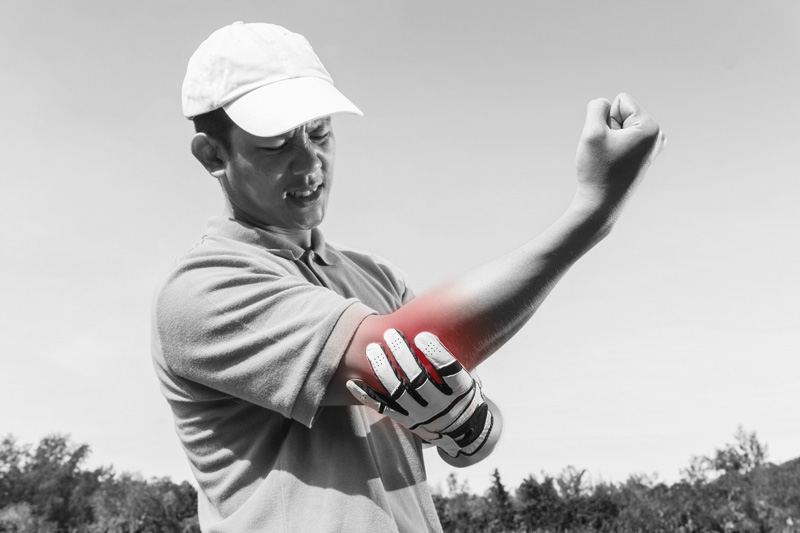Do You Have Elbow Pain?
If you have elbow pain, you are not alone. It is one of the most prevalent orthopedic problems in America today. Driving this common problem is our constant repetitive use of our computers, laptops, tablets, and phones. The hours of typing, texting, and scrolling on our digital devices creates stress on the muscles, tendons, and joints of the upper extremity. The common use by the office worker and weekend warrior frequently creates scar tissue in the upper arm and forearm muscles and, thus, referring pain to the elbow. With a greater frequency we seem to be treating more cases of elbow problems in the office. So to help you, we have put together 7 ways to fix your elbow pain:
1. Look Beyond the Elbow
Considered a hinge joint, the elbow is functionally similar to the knee. It rests between the shoulder and wrist joints and helps to transmit force from your shoulder to your hand, hand to your shoulder, or precisely position your hand for fine motor activities. Joint restrictions at the shoulder or at the wrist will increase the load on the elbow, creating pain.
Try stretching the wrist and shoulder muscles to decrease the stress placed on the elbow. These stretches can be performed in the shower or frequently at work.
2. Strengthen the Posterior Shoulder Chain
Many articles will point to strengthening the elbow with exercises that concentrate on the elbow muscles to alleviate local pain. I would recommend that you don’t do these exercises as the problem with elbow pain is that most of these muscles are already overloaded. Try working the shoulder and elbow together as a functional unit to train the brain in using the shoulder for the majority of the lifting load. This exercise using bands or dumbbells can work great:
3. Heat and Ice
A common question in rehab is when to use heat and when to use ice. Use heat in the morning to bring blood flow to the elbow. A hot shower, hot towel, or hot bath works great. Use ice at the end of the day to decrease inflammation.
4. Take A Break
Repetitive activities are the most common causes of elbow pain. Taking a break from the pain causing activity can make a huge difference. If this sounds like common sense it is because it is. However, because most of the time this activity is one of our favorite hobbies (i.e. tennis) or work related we struggle to make any changes. If you can’t avoid the activity entirely then try taking small breaks during the day to improve the elbow muscles’ recovery rate. Small breaks of just a few seconds or minutes can make a profound difference by the end of the day or match.
5. Supplements Can Help
- L-glutamine can improve the recovery rate of the elbow muscles after repetitive use. This can lead to a decrease in the amount of scar tissue formation and therefore help to minimize future elbow pain.
- Curcumin is a natural anti-inflammatory that has been studied extensively for its ability to decrease chronic pain. Curcumin has been helpful for many patients here in the office to decrease their daily elbow pain.
- Biofreeze can give some instant relief with its ability to cool and calm irritated muscles.
6. Acupuncture
Acupuncture has a unique ability to alter how the brain perceives pain. Acupuncture for elbow pain is very effective for pain control and can be effective in the very first treatment. By triggering the brain to release endorphins 200 times stronger than morphine, acupuncture has been a time tested treatment for many different pain problems.
 7. Active Release Treatment
7. Active Release Treatment
Active Release Treatment (A.R.T.) has been the gold standard of soft-tissue treatments for repetitive use injuries for over 25 years. Active Release is frequently sought after for its ability to rapidly return injured players back to the field and workers back to work. A.R.T. Works so well because of the speed that it can reduce scar tissue and aid tissue healing. Dr. Rich is the only certified A.R.T. Provider in the Roanoke, Virginia region and has been certified since 2003. A.R.T. is an integral part of Dr. Rich’s chiropractic practice.

Daryl C. Rich, D.C., C.S.C.S.





